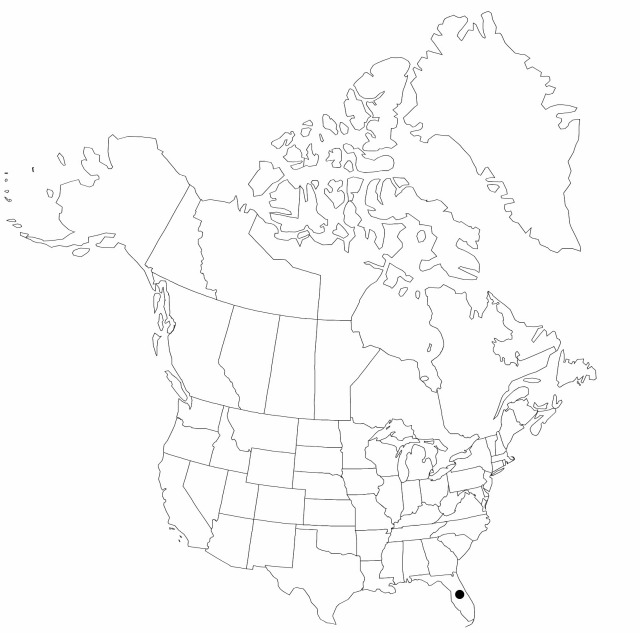Cyperus fuligineus
Fl. South. U.S., 511. 1860.
Illustrated
Herbs, perennial, cespitose, rhizomatous. Culms trigonous, 7–30 cm × 0.5–1 mm, glabrous. Leaves V-shaped to flat, 5–20 cm × 1–2.5 mm. Inflorescences: spike hemispheric, 7–20 mm wide; rays absent; rachis 1–3 mm; bracts 2–3, reflexed, flat, 5–12 cm × 1–2 mm; rachilla deciduous, wings 0.2 mm wide. Spikelets 30–50, compressed, oblong-lanceoloid, 4–10 × 1.7–2.3 mm; floral scales deciduous, 5–12, dark reddish brown, laterally 3–5-ribbed, ovate, 1.5–2.2 × 1–1.6 mm, apex with mucro 0.1–0.2 mm. Flowers: anthers 0.4–0.6 mm; styles 0.4–0.6 mm; stigmas 1–2 mm. Achenes black, sessile, narrowly ellipsoid, 1–1.2 × 0.5–0.6 mm, apex obtuse, apiculate, glabrous, puncticulate, or papillose.
Phenology: Fruiting spring–summer.
Habitat: Coastal rocks, exposed limestone in hammocks and edges of mangrove swamps
Elevation: 0–10 m
Distribution

Fla., West Indies.
Discussion
Selected References
None.
Lower Taxa
None.
